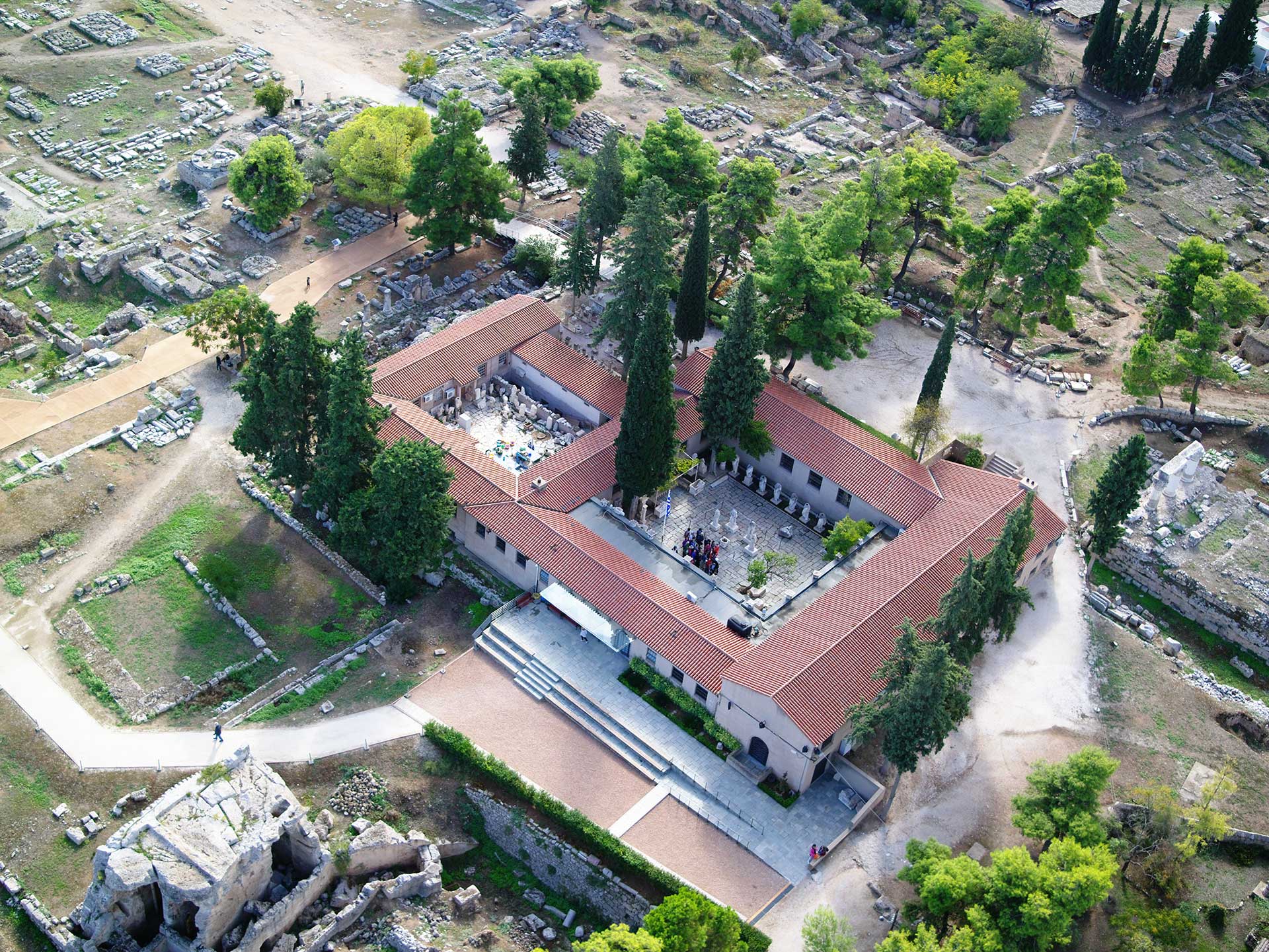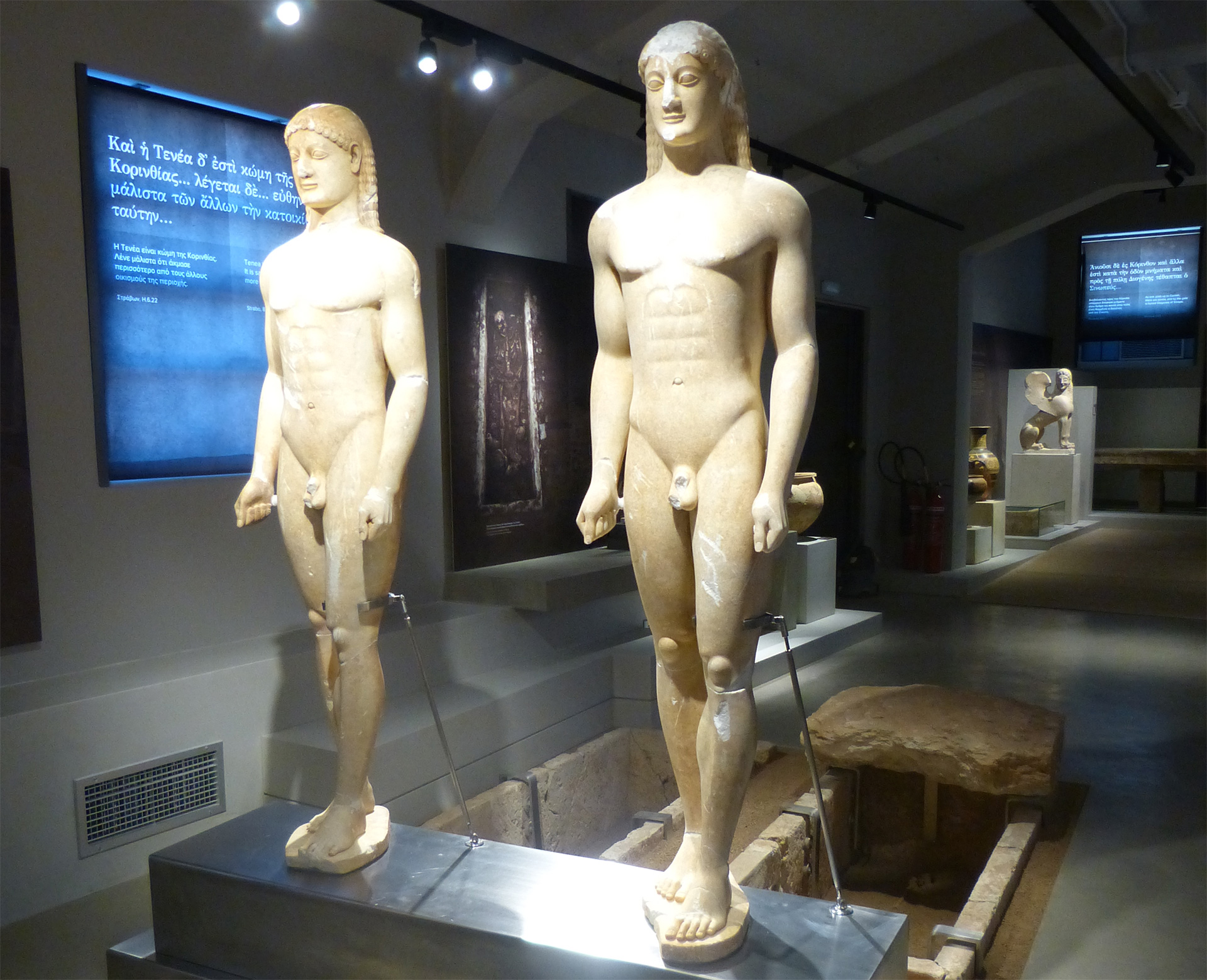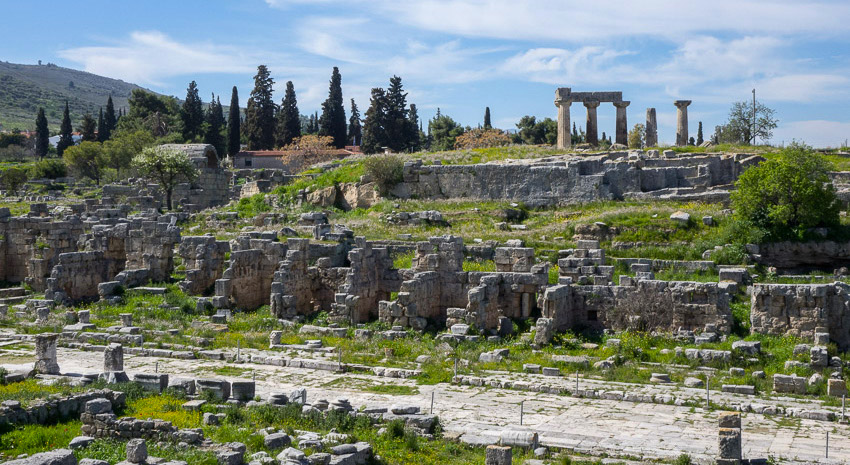By Maria Gkika,
Located next to the temple of Apollo, in the heart of the archaeological site lies the newly renovated museum of ancient Corinth. While it is not uncommon to find ruins of ancient Greek cities, it is rare to see the development of such an important one over such a long period of time. From prehistoric times to the Byzantine era and the Frankish rule, we follow the growth and the history of one of the most powerful city-states in the Greek civilization.
It was built by the American School of Classical Studies in 1932, after a donation from Ada Small Moore and designed by W. Stuart Thompson, in order to house the objects found during the excavation. From then on, the museum was expanded with new wings, a work that concluded in 2015. Easy to navigate and small in size, it is one of the few museums where visitors can observe up close the ancient sculptures displayed side by side in both the outdoor perimetric corridors and the open atriums in between.
Furthermore, the exhibition inside is also very well organized, as each collection occupies a different area, according to the period and the subject. Modern technology also provides a greater immersion. The audio-visual material sheds some light on Corinth’s unique cultural character, its commercial activity, artistic achievements, cult beliefs, burial practices, domestic life, and the military events which marked the fortunes of this Greek city.

The museum houses numerous artifacts, which cover the history of ancient Corinth through Greek, Roman, and Byzantine rule. Exhibits include statues, mosaics, pottery, and sarcophagi that allow the visitor to get a glimpse at the evolution of art, life, customs, and religion through the ages. There are also interesting facts to discover about the Corinthian dialect and the way it influenced Latin and thus, many modern languages.
One of the most memorable things to see is the famous Kouroi of Klenia. Made of Parian marble sometime in 530-520 BC, these two unique statues were confiscated from antiquity smugglers at the modern village Klenia in Corinthia, broken in parts, and had quite an adventure before their safe restoration. An extraordinary fact is that the twin Kouroi are the only archaic burial statue group found in the Helladic area.
It is also necessary to mention the findings from the sanctuary of Asklepios in ancient Corinth, as well as the “Return to the homeland” section, which presents 274 repatriated ancient objects which had been stolen from the Museum in 1990 and were traced to the USA, 10 years later. In the same room, an impressive Sarcophagus represents the departure of the “Seven against Thebes”.

Last but not least, the greatest proof of the existence and luxury of ancient Corinth can be found outside the walls of the museum. As the excavations brought to life various monuments of the ancient city, one has the chance to walk through the old stone roads and admire the Theatre, the Roman Odeion, the Roman Baths, the temple of Asclepius and Hygieia (Asclepieion), as well as many other memorable buildings. It is incredible how the grandeur and the beauty of this city are still evident after all this time.
To conclude, visiting both the archaeological site and the museum of ancient Corinth on the same day is a unique opportunity that no history lover should pass up! Take advantage of the open dates, especially during the spring and summer, when the weather is most pleasant.
References
- Official page of the Archaeological Museum of ancient Corinth, corinth-museum.gr, Available here
- Ancient Corinth and Acrocorinth, greecetravel.com, Available here
- Archaeological Museum of Ancient Corinth – Virtual Tour, joyofmuseums.com, Available here
- Corinth, britannica.com, Available here




